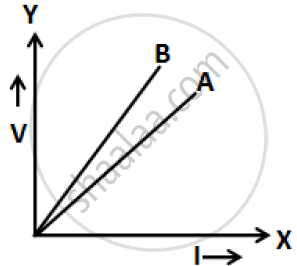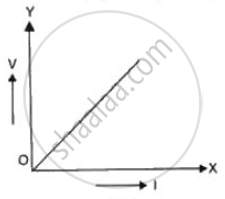Advertisements
Advertisements
प्रश्न
V = IRTwo resistances X and Y are connected turn by turn : (i) in parallel, and (ii) series. In which case the resultant resistance will be less than either of the individual resistances?R = R1+ R2+ R3
उत्तर
When two resistors, X and Y are connected in parallel combination, the total resistance will be less than the individual resistance. The total resistance in a parallel arrangement is given by:
`1/R=1/R_1+1/R_2`
where as in a series combination, the total resistance is more than the individual resistances. The total resistance in a series combination is given by:
R = R1+ R2
APPEARS IN
संबंधित प्रश्न
The V-I graph for a series combination and for a parallel combination of two resistors is shown in the figure below. Which of the two A or B. represents the parallel combination? Give reasons for your answer.

Give the law of combination of resistances in series.
State how are the two resistors joined with a battery when same current flows in each resistor.
A graph is plotted taking p.d. along y-axis and electric current along x-axis. Name the physical quantity that represents the slope of this graph (Fig.).

Bends in a rubber pipe reduce the flow of water through it. How would the bands in a wire affect its electric resistance?
You are provided with three resistors of resistance 1.0 Ω, 2.0 Ω and 3.0 Ω How would you connect them to obtain the total effective resistance 1.5 Ω? Draw diagram of the arrangement and check it by calculations.
Two lamps of resistance 30Ω and 20Ω respectively are connected in series in a 110V circuit. Calculate:
(i) the total resistance in the circuit
(ii) the current in the circuit, and
(iii) the voltage drop across each lamp.
2Ω resistor A, 1Ω resistor B and 4Ω resistor C are connected in parallel. The combination is connected across a 2V battery of negligible resistance. Draw the diagram of the arrangement and calculate:
(i) The current in each resistor A and C,
(ii) The current through battery.
